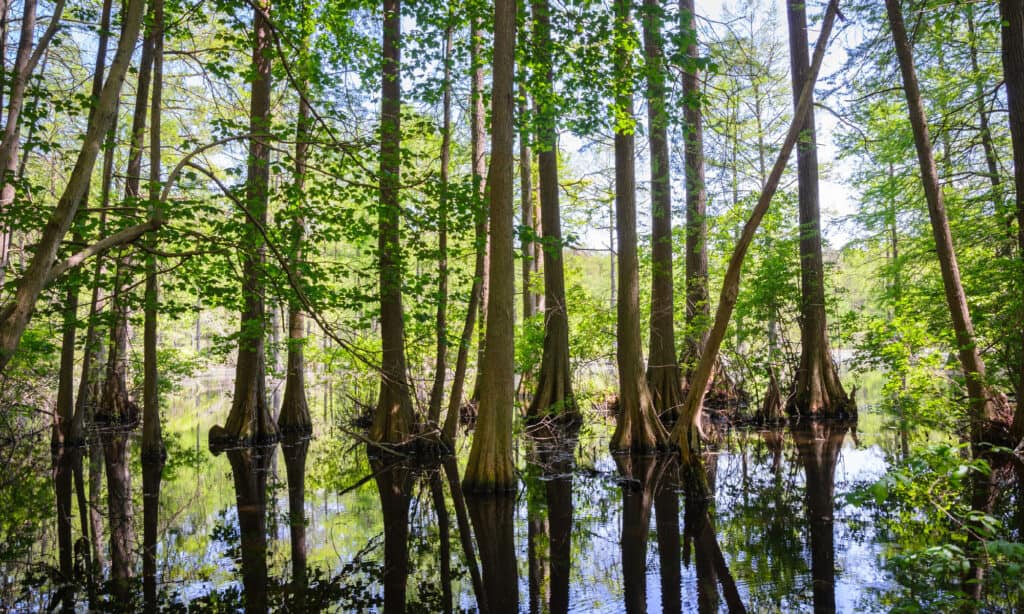In simple terms, an ecosystem is an area where organisms, such as plants and animals, work together to create and continue life.
Ecosystem Meaning
An ecosystem is a community of organisms that interacts with their physical environment. Living and nonliving components interact with each other through cycles and energy flows. In simple terms, an ecosystem is an area where organisms, such as plants and animals, work together to create and continue life. The living parts (biotic) of an ecosystem consist of animals, plants, and other organisms. Nonliving parts (abiotic) can be anything from weather to rocks. Any kind of change in an ecosystem can directly or indirectly affect everything within this bubble, whether good or bad.

Swamps are a type of ecosystem
©iStock.com/zrfphoto
Ecosystem Examples and Types
Earth, as a whole, features an innumerable amount of connected ecosystems, from the ocean to forests and deserts. The ocean is a marine ecosystem, whereas a lake or pond is a freshwater ecosystem. Swamps are a type of wetland ecosystem with poor drainage and many trees. Marshes are also wetland ecosystems, but they are dominated by grasses. And every animal within these ecosystems depends on and is adapted to live within these geographic regions.
Here are some more examples of ecosystems:
- Grasslands
- Forests
- Wetlands
- Coral reefs
- Deserts
- Tundra
- Mangroves
- Savannas
- Rainforests
- Lakes
- Ponds
- Rivers
- Marine
- Mountains
- Swamps
- Estuaries
- Temperate deciduous forests

Ecosystems produce and sustain life
©Macrovector/Shutterstock.com
Ecosystem Components
To maintain the ecosystem’s equilibrium, there must be two main components: biotic and abiotic parts. In other words, living and nonliving things. It also has the basic components of energy, habitat, and biome. And the main agent for ecosystems is sunlight. But other important abiotic parts include air, soil, and water.
And the biotic parts can be categorized into two primary groups: autotrophs and heterotrophs. Autotrophs are plants that produce their own food using photosynthesis and chemosynthesis. And heterotrophs are the consumers that use autotrophs for nourishment.
The four main categories for the components of an ecosystem include abiotic elements, producers, consumers, and decomposers.
What is the Significance of an Ecosystem?
Ecosystems produce and sustain life. They provide habitats for plants and animals, and they promote food chains. Ecosystems recycle nutrients between living and nonliving components, and they support many ecological processes. They also maintain flows of energy, such as carbon, nitrogen, oxygen, and water. All life must be supported by an ecosystem.



